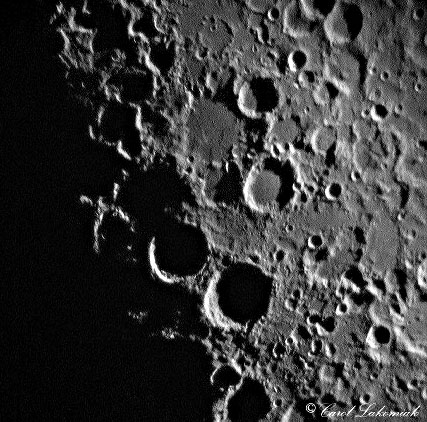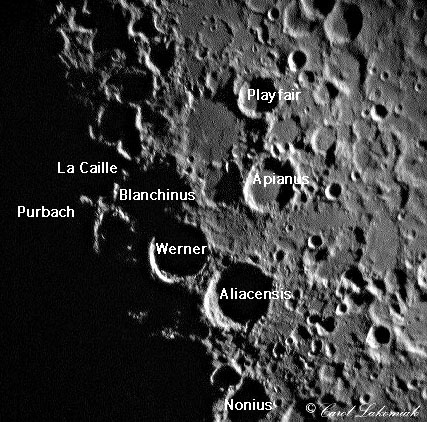Difference between revisions of "August 29, 2004"
| (13 intermediate revisions by the same user not shown) | |||
| Line 1: | Line 1: | ||
__NOTOC__ | __NOTOC__ | ||
=X Marks the Spot= | =X Marks the Spot= | ||
| + | <!-- Start of content --> | ||
<br> | <br> | ||
| − | |||
| − | |||
| − | |||
| − | |||
| − | |||
| − | |||
<table width="85%" border="0" align="center" cellpadding="6" cellspacing="2"> | <table width="85%" border="0" align="center" cellpadding="6" cellspacing="2"> | ||
<tr> | <tr> | ||
<td colspan="2" valign="top"><div align="center"> | <td colspan="2" valign="top"><div align="center"> | ||
| − | + | {{HoverImage|LPOD-2004-08-29.jpeg|LPOD-2004-08-29b.jpeg}} | |
</div></td> | </div></td> | ||
</tr> | </tr> | ||
| Line 17: | Line 12: | ||
<table width="80%" border="0" align="center" cellpadding="8"> | <table width="80%" border="0" align="center" cellpadding="8"> | ||
<tr> | <tr> | ||
| − | <td><div align="center" class="main_sm">Image Credit: [mailto:strgzr52@lycos.com | + | <td><div align="center" class="main_sm"> |
| + | Image Credit: [mailto:strgzr52@lycos.com Carol Lakomiak] | ||
| + | </div></td> | ||
</tr> | </tr> | ||
</table> | </table> | ||
| Line 24: | Line 21: | ||
<p class="story" align="center"><b>X Marks the Spot</b></p> | <p class="story" align="center"><b>X Marks the Spot</b></p> | ||
<p class="story" align="left"> | <p class="story" align="left"> | ||
| − | Cruising the terminator is how to see the most dramatic Moon views. Usually they are on the lit side, but it is always exciting to see a lone tall peak catching the morning rays before the surrounding terrain has become illuminated. Earlier this summer Carol Lakomiak observed at just the right moment to see entire ridges, which cross to form an X, illuminated in the lunar pre-dawn darkness. Here is Carol's description of what forms the arms of the X: "One arm extends up from Werner, and I 'think' the two little white blips to the left of Werner are the eastern walls of Werner A and a small crater below it. The bottom of that same arm looks like it begins on the very southeastern edge of Werner H and extends to the northwest till it hits the southwestern edge of Purbach H. The other arm of the X, which runs SW-NEl, looks like it begins on the southeast edge of Purbach, with the end of it being the actual border between la Caille and Blanchinus. Just to the inside of the lower left section of the X, there's another little blip of light.. I think it might be the sunlit western edge of Werner B." | + | Cruising the terminator is how to see the most dramatic Moon views. Usually they are on the lit side, but it is always exciting to see a lone tall peak catching the morning rays before the surrounding terrain has become illuminated. Earlier this summer Carol Lakomiak observed at just the right moment to see entire ridges, which cross to form an X, illuminated in the lunar pre-dawn darkness. Here is Carol's description of what forms the arms of the X: "One arm extends up from Werner, and I 'think' the two little white blips to the left of Werner are the eastern walls of Werner A and a small crater below it. The bottom of that same arm looks like it begins on the very southeastern edge of Werner H and extends to the northwest till it hits the southwestern edge of Purbach H. The other arm of the X, which runs SW-NEl, looks like it begins on the southeast edge of Purbach, with the end of it being the actual border between la Caille and Blanchinus. Just to the inside of the lower left section of the X, there's another little blip of light.. I think it might be the sunlit western edge of Werner B."</p> |
<blockquote> | <blockquote> | ||
<p align="right"> — [mailto:tychocrater@yahoo.com Chuck Wood ]</p> | <p align="right"> — [mailto:tychocrater@yahoo.com Chuck Wood ]</p> | ||
| Line 33: | Line 30: | ||
[http://www.lpi.usra.edu/research/cla/info/f13/ CLA image of this area illuminated] <br> | [http://www.lpi.usra.edu/research/cla/info/f13/ CLA image of this area illuminated] <br> | ||
Rukl Atlas of the Moon Sheet 55</p> | Rukl Atlas of the Moon Sheet 55</p> | ||
| − | <p><b>Tomorrow's LPOD:</b> Are Central Peaks Volcanoes?</p> | + | <p><b>Yesterday's LPOD:</b> [[August 28, 2004|Volcanic Hills in the Ocean of Storms]] </p> |
| + | <p><b>Tomorrow's LPOD:</b> [[August 30, 2004|Are Central Peaks Volcanoes?]] </p> | ||
</tr> | </tr> | ||
</table> | </table> | ||
| Line 44: | Line 42: | ||
<td><p align="center" class="main_titles"><b>Author & Editor:</b><br> | <td><p align="center" class="main_titles"><b>Author & Editor:</b><br> | ||
[mailto:tychocrater@yahoo.com Charles A. Wood]</p> | [mailto:tychocrater@yahoo.com Charles A. Wood]</p> | ||
| − | < | + | <!-- Cleanup of credits --> |
| − | + | <!-- Cleanup of credits --> | |
| − | < | + | <!-- Cleanup of credits --> |
| − | + | <!-- Cleanup of credits --> | |
| − | < | + | <!-- Cleanup of credits --> |
| − | + | <!-- Cleanup of credits --> | |
| − | < | + | <!-- Cleanup of credits --> |
| − | < | + | <!-- Cleanup of credits --> |
| − | + | <!-- Cleanup of credits --> | |
| − | < | + | {{wiki/ArticleFooter}} |
| − | ---- | ||
| − | |||
| − | |||
Latest revision as of 14:35, 15 March 2015
X Marks the Spot
Image Credit: Carol Lakomiak |
|
X Marks the Spot Cruising the terminator is how to see the most dramatic Moon views. Usually they are on the lit side, but it is always exciting to see a lone tall peak catching the morning rays before the surrounding terrain has become illuminated. Earlier this summer Carol Lakomiak observed at just the right moment to see entire ridges, which cross to form an X, illuminated in the lunar pre-dawn darkness. Here is Carol's description of what forms the arms of the X: "One arm extends up from Werner, and I 'think' the two little white blips to the left of Werner are the eastern walls of Werner A and a small crater below it. The bottom of that same arm looks like it begins on the very southeastern edge of Werner H and extends to the northwest till it hits the southwestern edge of Purbach H. The other arm of the X, which runs SW-NEl, looks like it begins on the southeast edge of Purbach, with the end of it being the actual border between la Caille and Blanchinus. Just to the inside of the lower left section of the X, there's another little blip of light.. I think it might be the sunlit western edge of Werner B." Technical Details: Related Links: Yesterday's LPOD: Volcanic Hills in the Ocean of Storms Tomorrow's LPOD: Are Central Peaks Volcanoes? |
Author & Editor: COMMENTS?Register, Log in, and join in the comments.
|





